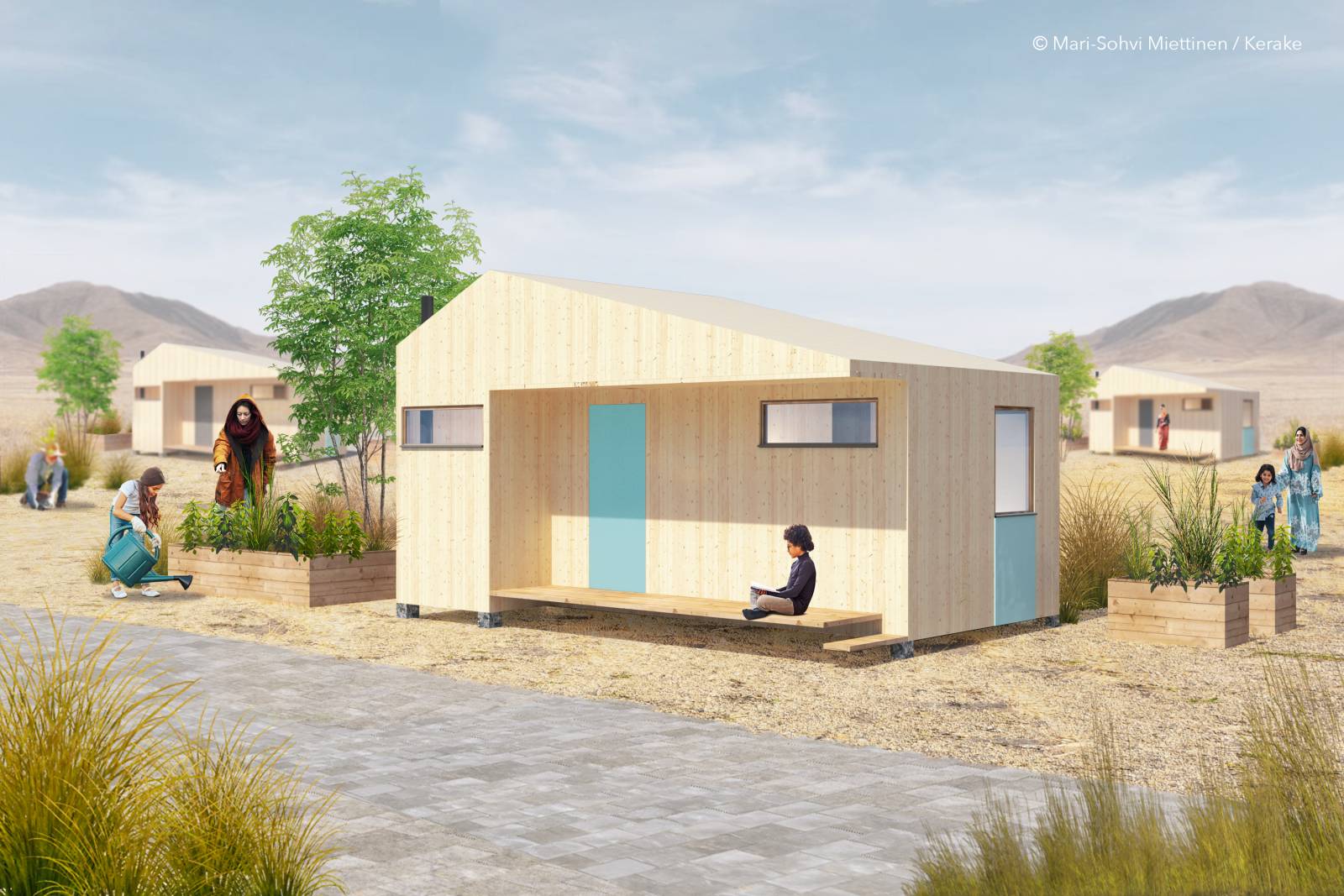Arbo shelter – a wooden housing concept for developing areas
Every day, over 40 000 people are forced to leave their homes due to conflicts or persecution. Extreme weather conditions, such as draught or storms caused by climate change, are another reason for people having to escape. In acute situations the primary housing solution for refugees is a tent. In many cases the immigration becomes a long-term situation that can last for years. Refugee camps have become fixed urban settlements. In these circumstances the tent won’t be enough to provide the shelter the residents need as the base for their everyday life.
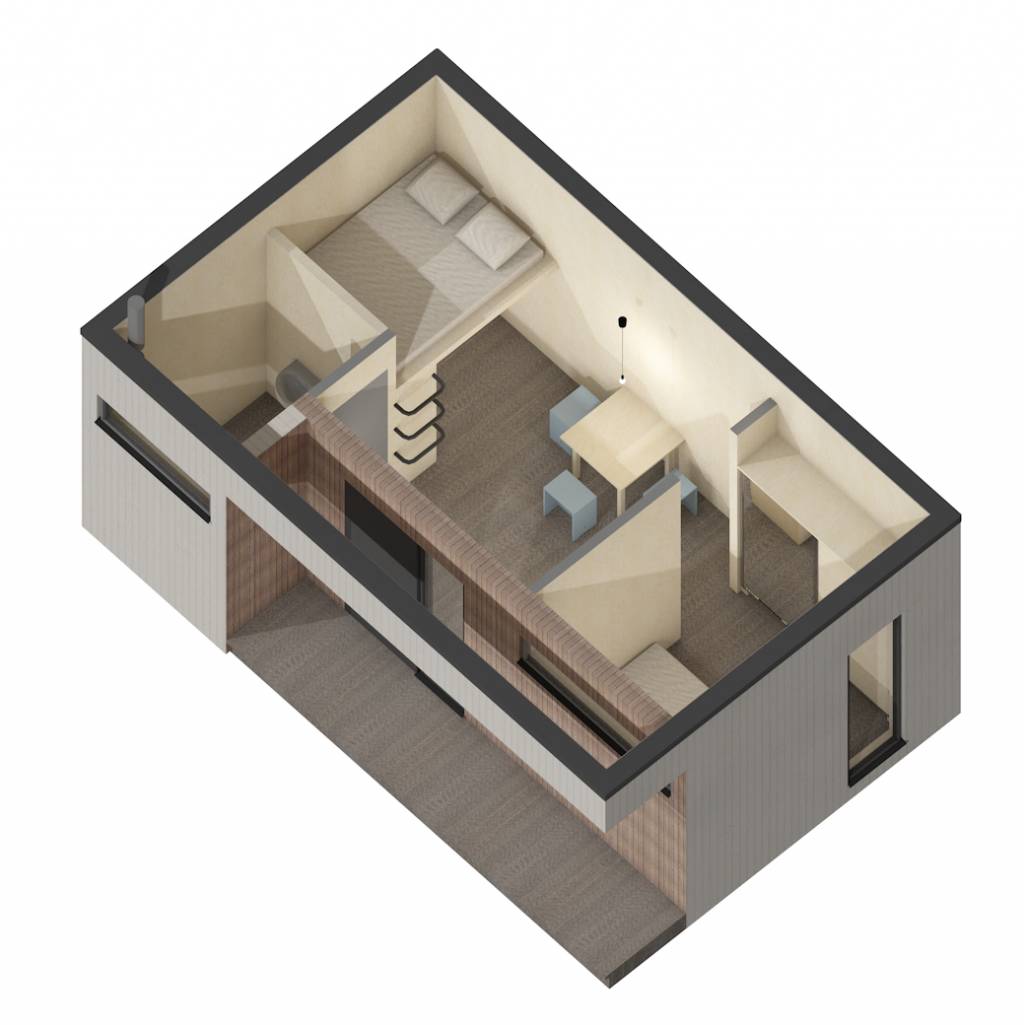
Spatial concept
Arbo shelter is extremely efficient, only 21 m2, and can accommodate 4–6 persons. The design of the Arbo shelter relies on international recommendations by the UN Refugee Agency. These include the minimum space that should be guaranteed for each resident, possibility for growing food, easy access to necessities such as clean water on the community level, and a private toilet for each family unit to improve safety and hygiene.
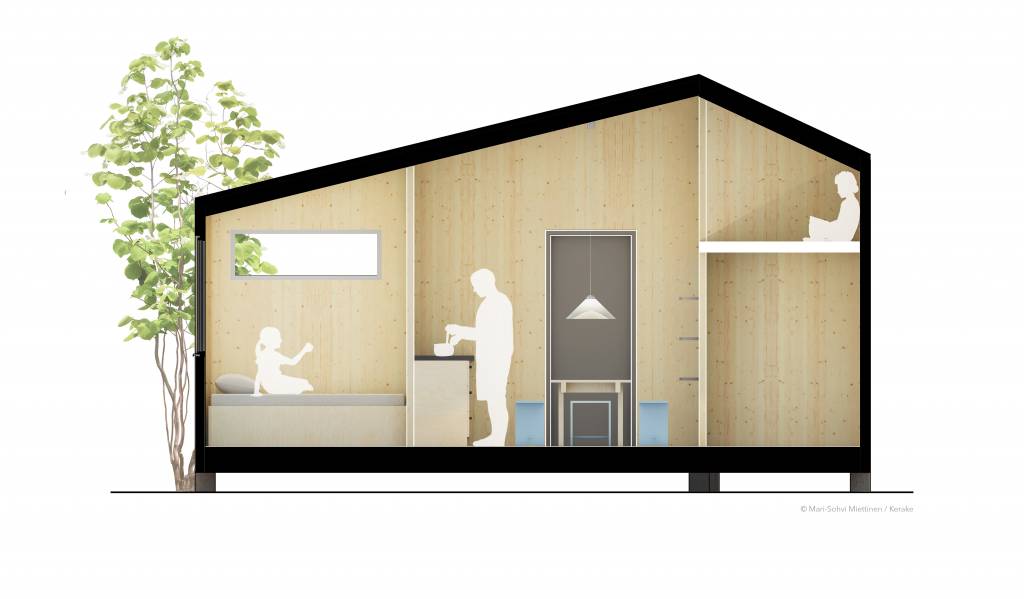
The main targets in the spatial design are to point a clear place for each function, and to offer privacy for the residents in terms of the tiny space. Both the sleeping alcove and loft can accommodate two people, and two extra beds can be added underneath the loft.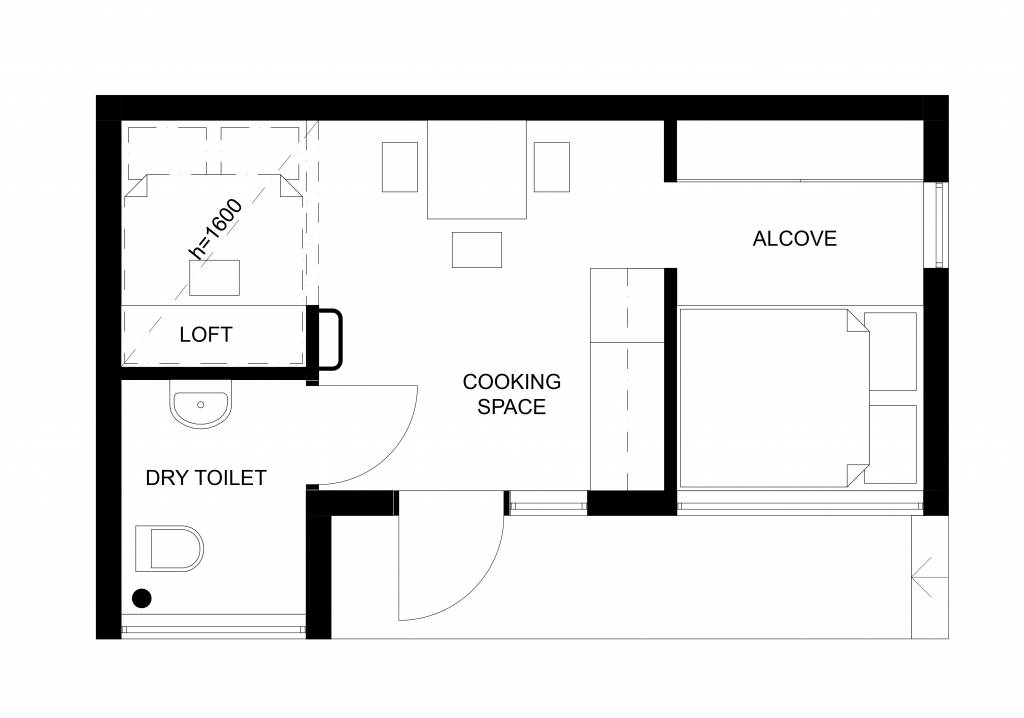
Sustainability with wood and circular economy
A main target of Arbo shelter is to offer a solution for emergency housing, that has a holistic take on sustainability. Wood is a low-carbon material that is considered to be pleasant for the user. It benefits the acoustics of the space and evens up differences in humidity and temperature.
Finland has a strong tradition for timber structures, but there is still plenty to do in exploring the possibilities of reuse of timber materials and elements in construction. According to the Waste Directive, given by EU in 2008, all construction materials should be designed to be reused for their original purpose. Accordingly, Finland set a target for reusing 70 percent of demolition waste from buildings as construction material by the end of 2020. This is why themes of flexibility, mobility and reuse are essential in developing the Arbo concept. As a small scale building it offers opportunities for piloting for example joint techniques for wood elements, that allow the building to be disassembled, moved and assembled again.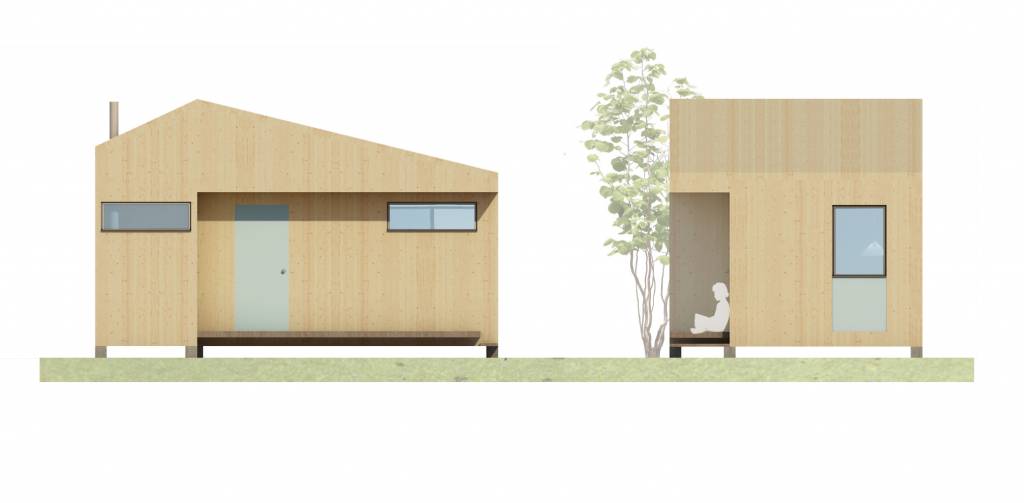
Sources:
UNHCR Handbook for Emergencies
Maailma2030.fi
Huuhka et al.: Puurakenteiden uudelleenkäyttömahdollisuudet, 2018

